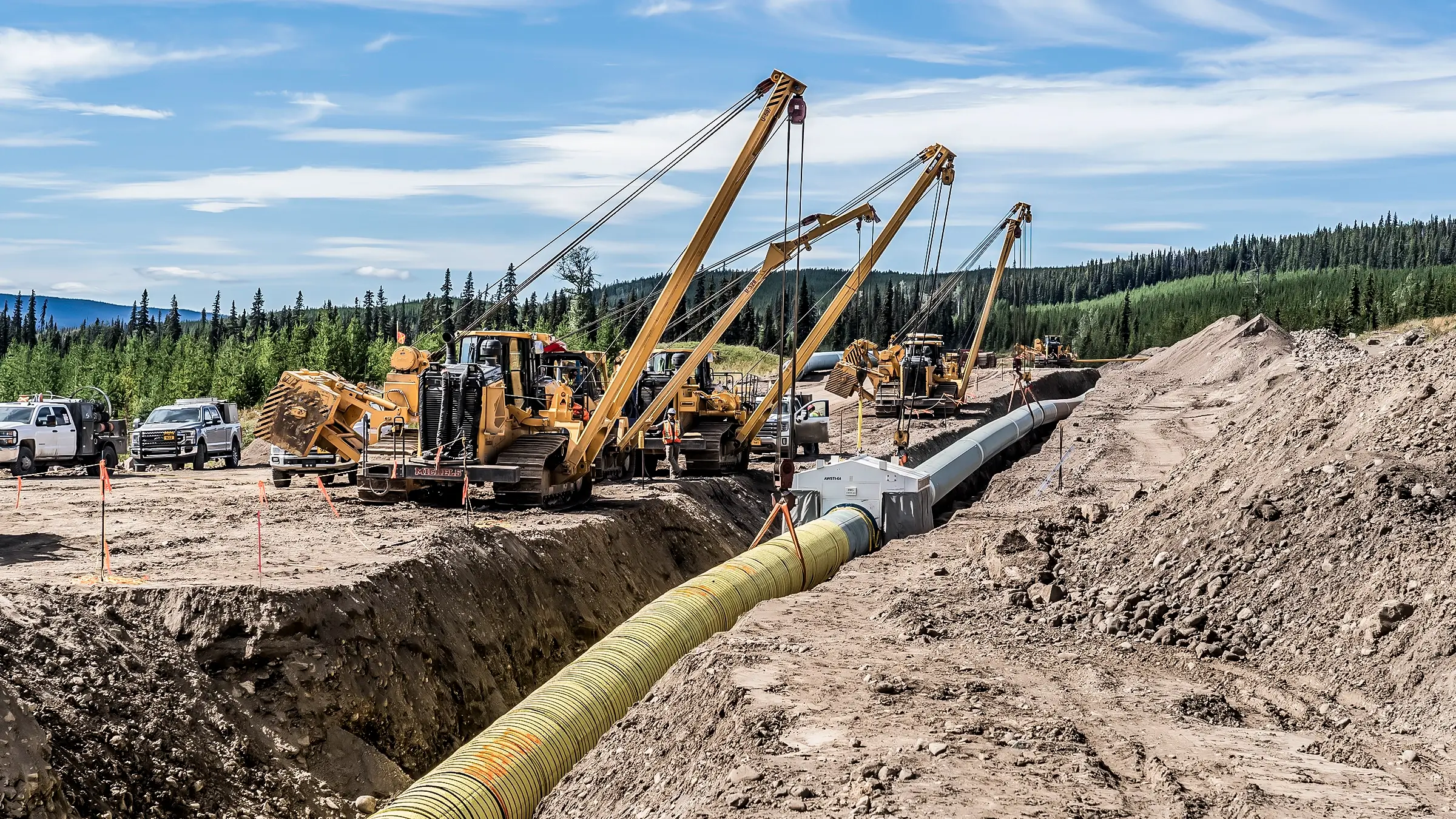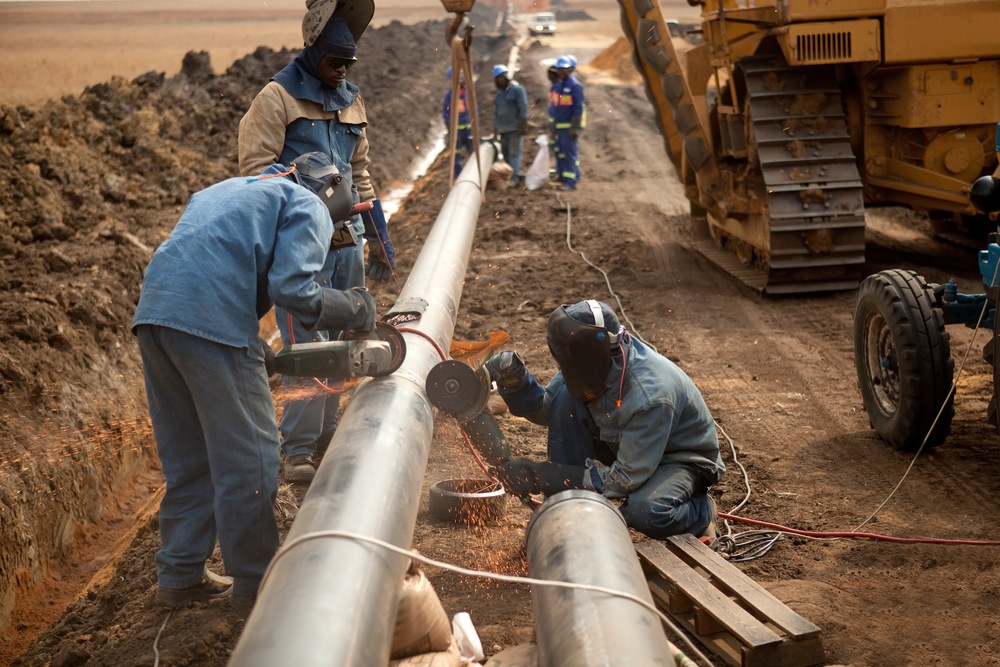Your Ultimate Guide to Working With Creek Pipe near me
Comprehending the Basics of Pipes Installation: What You Required to Learn About the Process
Correct pipe installation is essential for any plumbing system. It requires mindful consideration of various elements, including product choice and adherence to neighborhood regulations. A well-planned design can prevent problems like stress loss, while the right devices assure efficient joining methods. However, even experienced installers can make usual mistakes. Comprehending these basics can result in a more efficient and long lasting system, triggering a closer consider the crucial elements associated with the procedure.
Selecting the Right Materials for Pipe Installation
When taking into consideration pipe installation, the option of appropriate materials is vital to guaranteeing resilience and functionality. Numerous materials are available, each offering distinct benefits and considerations. As an example, PVC pipes are light-weight, resistant to corrosion, and cost-efficient, making them suitable for property pipes. Conversely, copper pipelines, known for their long life and capacity to endure heats, are frequently chosen for heating systems.Additionally, galvanized steel pipes offer toughness and sturdiness, suitable for heavy-duty applications, although they are susceptible to corrosion over time.For below ground setups, polyethylene pipes are favored due to their adaptability and resistance to anxiety splitting. Correct material choice relies on the particular needs of the task, consisting of pressure scores, temperature level variants, and the chemical nature of the fluids being carried - Creek Pipe HDPE installation. Eventually, notified selections relating to pipe products add greatly to the general success and longevity of plumbing systems
Understanding Local Building Codes and Rules
Exactly how can comprehending local structure codes and guidelines influence pipe installation? Familiarity with these codes is vital for ensuring that pipe installments are secure, compliant, and effective. Neighborhood building ordinance describe details needs pertaining to products, installation techniques, and precaution, which have to be complied with to avoid prospective legal concerns and pricey fines.Failure to comply can cause inspections being stopped working, delays in project completion, and even mandated removal of poorly mounted pipes. Additionally, comprehending zoning legislations and policies can affect the kind of materials allowed, in addition to the approaches made use of for installation.Contractors and property owners alike must spend time in reviewing regional guidelines before commencing any installation task. This aggressive technique not just advertises security but likewise improves the general top quality and longevity of the plumbing system, ultimately fostering long-term capability and complete satisfaction.
Planning Your Pipe Design and Design
Appropriate planning of pipe design and design is essential for accomplishing a reliable plumbing system. This procedure starts with assessing the details demands of the space, considering the place of components and devices. Exact dimensions ensure that pipelines are effectively directed, lessening bends and turns that can bring about pressure loss.Consideration of the flow rates and the kinds of materials made use of is crucial, as various products have differing sturdiness and compatibility with plumbing systems. In addition, the developer should make up future expansions or alterations to the design, permitting versatility in case of renovations.Efficient water drainage and air flow are additionally considerable elements of the layout, as they protect against blockages and ensure appropriate waste removal. Ultimately, collaboration with regional building ordinance assures compliance and safety and security, which is paramount in any pipes installation project.
Important Tools and Devices for Installation
Effective pipe installation depends upon having the right tools and devices available. Essential tools include pipe cutters for tidy cuts, wrenches for tightening installations, and pliers for grasping and turning pipes. Furthermore, a level assurances pipelines are set up uniformly, while a measuring tape aids in achieving specific lengths.For certain materials, a blowpipe may be required for copper pipelines, while a PVC cutter is pipe freezing services important for plastic choices. Safety equipment, such as handwear covers and safety glasses, safeguards installers from possible threats during the process.A pipeline bender can be particularly helpful for producing smooth curves without endangering honesty, while a torque wrench assurances that connections are protected to the supplier's specifications.Having these devices readily available not just facilitates a smoother installation process yet likewise contributes to the total toughness and functionality of the pipes system. Proper equipment is essential in attaining long-lasting results.
Strategies for Correct Pipe Signing Up With and Securing
Achieving a safe and secure and leak-free connection between pipelines calls for cautious focus to joining and securing strategies. Numerous techniques exist, each matched to various pipe materials and applications (Creek Pipe near me). As an example, welding is usually employed for steel pipelines, guaranteeing durable links with warm fusion. In contrast, plastic pipelines benefit from solvent concrete or blend welding, producing strong, irreversible bonds.Threaded connections prevail in both steel and plastic piping, requiring specific positioning and the use of suitable sealants, such as Teflon tape or pipe dope, to avoid leaks. Compression fittings offer one more choice, where mechanical stress secures the pipes together, making them quickly dismantled for maintenance.Regardless of the method selected, proper prep work is important. This includes cleaning pipe finishes and ensuring they are free from debris. Executing these methods carefully will enhance the longevity and reliability of the pipe system, eventually adding to its reliable efficiency
Typical Blunders to Stay Clear Of During Installation
Throughout pipe installation, staying clear of common errors is vital for ensuring a trustworthy and efficient system. One regular mistake is falling short to measure and reduce pipes precisely, which can lead to inappropriate installations and leakages. In addition, ignoring to inspect the compatibility of materials can lead to deterioration or other damage with time. Improperly securing joints and connections can likewise create weak points in the system, triggering prospective failures.Another common blunder is overlooking the relevance of slope and drainage; pipelines have to be set up at the proper angle to assist in correct flow. Inadequate support for pipelines can result in sagging and anxiety, influencing the honesty of the system. Eventually, overlooking local codes and policies can lead to pricey rework and safety risks. By understanding these risks, installers can greatly improve the toughness and efficiency of pipe systems.
Upkeep Tips for Lasting Pipe Equipments
To assure the durability of pipe systems, routine inspections and cleaning are vital techniques. These measures help identify possible issues prior to they rise right into significant troubles. Furthermore, using appropriate insulation strategies can additionally protect pipes from temperature level fluctuations and ecological visit here elements.
Routine Assessments and Cleaning
Regular evaluations and cleaning are crucial for preserving the longevity and effectiveness of pipe systems. Regularly taking a look at pipes for indications of deterioration, leakages, or obstructions can aid recognize potential issues prior to they escalate into expensive repair services. Cleaning pipelines occasionally eliminates buildup that can limit circulation and advertise deterioration. It is a good idea to set up assessments at least yearly, but much more constant checks might be needed in high-usage environments. Making use of expert solutions for detailed cleansing warranties that all particles is efficiently removed. In addition, maintaining documents of inspections and maintenance activities aids in tracking the system's wellness in time - Creek Pipe Texas oilfield. By focusing on these methods, homeowner can enhance the dependability and life-span of their pipe systems
Proper Insulation Strategies
Effective insulation strategies play a vital function in preserving the effectiveness and durability of pipe systems. Proper insulation reduces heat loss in warm water pipelines and stops cold in chilly water pipes, significantly reducing power costs and possible damage. Typical materials used for insulation consist of fiberglass, foam, and rubber, each offering differing degrees of thermal resistance. It is essential to assure that insulation is applied uniformly, covering all exposed areas without voids. Additionally, protecting insulation with proper bolts assists maintain its position and effectiveness with time. Normal examinations should be carried out to identify wear and tear, guaranteeing prompt replacements. By implementing these techniques, pipe systems can operate effectively and have an extensive solution life, eventually benefiting both the atmosphere and the i was reading this house owner.

Often Asked Concerns
Exactly how Do I Establish the Appropriate Pipe Dimension for My Job?
Determining the appropriate pipe dimension entails examining the project's flow demands, stress specs, and the kind of liquid being carried. Consulting design criteria and performing calculations warranties perfect efficiency and efficiency in the installation procedure.
What Are the Ecological Influences of Different Pipe Products?

Can I Set Up Pipes Myself or Should I Work with a Professional?
The inquiry of whether to mount pipes separately or work with a specialist often relies on the individual's skill degree and task intricacy. A specialist may assure conformity with laws and lower possible lasting issues.

For How Long Can I Expect My Pipe Installation to Last?
The long life of pipe installation varies substantially, usually lasting 20 to 100 years, depending on products, installation top quality, and maintenance. Normal assessments and proper treatment can boost durability and stop early failings.

What Are the Indicators of a Failing Pipe System?
Indicators of a falling short pipe system consist of regular leaks, unusual water pressure modifications, tarnished water, mold and mildew development, and consistent wetness. House owners ought to check these indicators to avoid pricey damage and assurance prompt repairs are made.